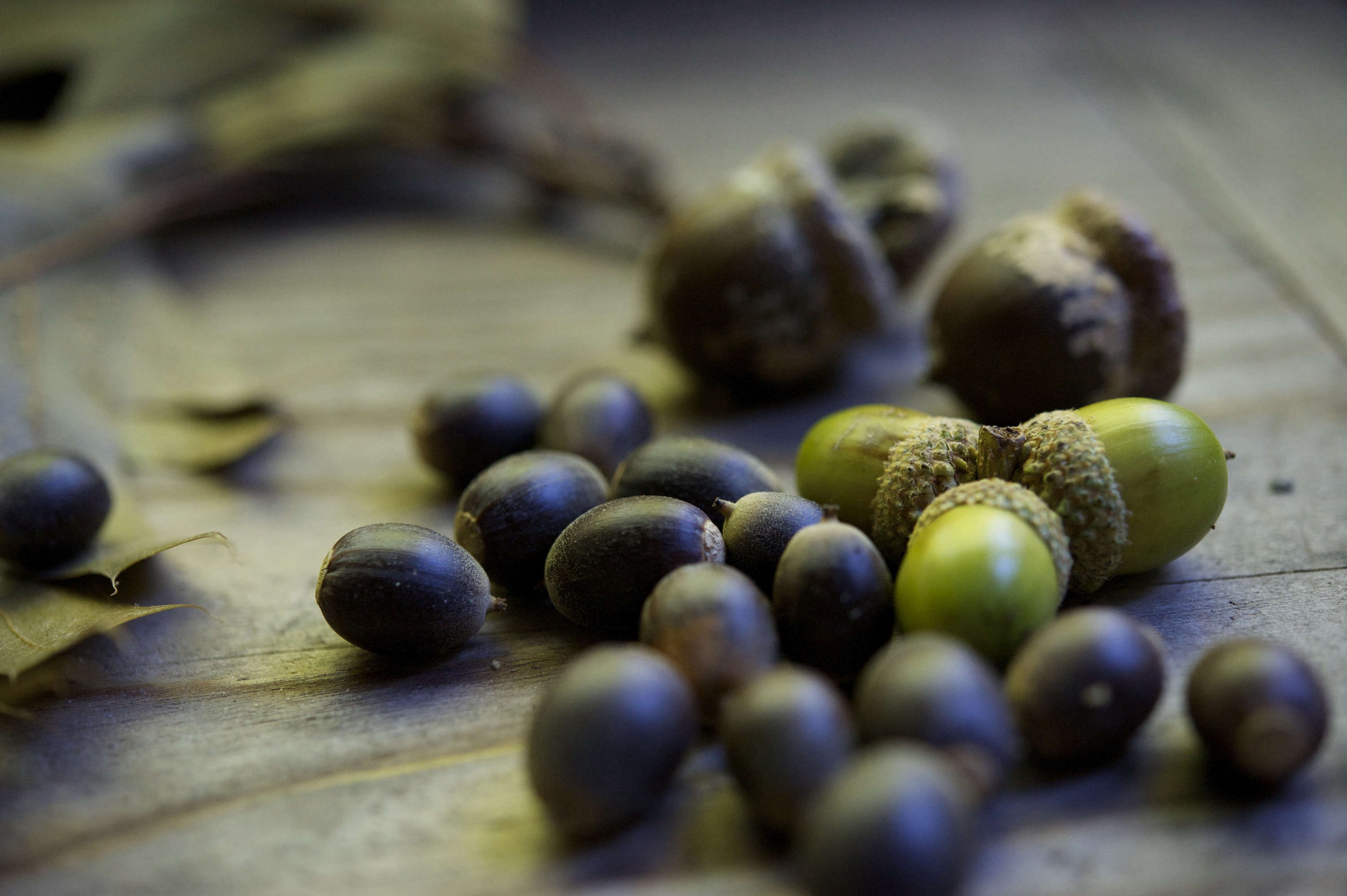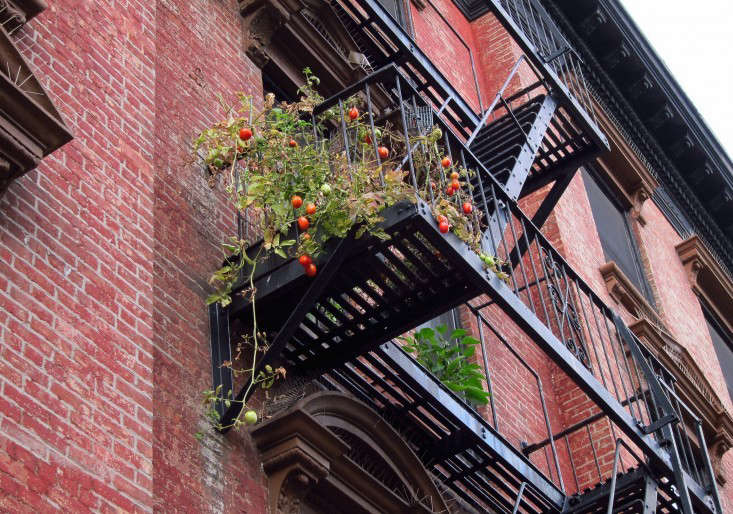This time of year, Cape Cod is especially glorious. The warm golden sunshine contrasts with air as crisp and clear as water, and the tension between summer and fall is palpable. Poison ivy (Toxicodendron radicans) and Virginia creeper (Parthenocissus quinquefolia) are entwined around shrubs and trees like scarlet ribbons, and the woods that stretch down to the beach are rich with edible treasures.
If you’re foraging for food, here’s what you’ll find:
Photography by Laura Silverman for Gardenista.

Above: The dwarf sumac (Rhus copallinum) that grows at the top of the dunes is different from the staghorn sumac (Rhus typhina) I find in upstate New York. The former have smaller clusters of deeper red berries but, as with all wild sumacs, the dwarf variety is coated in various natural acids that impart a tart flavor.

Above: It’s important to harvest the berries before the rains begin, as they will wash off this powdery coating. Soak several clusters of berries in water to make “Indian lemonade,” a pleasantly sour drink, or dry and grind them for a spice that resembles the one used in Persian cuisine.

Above: Beach plum (Prunus maritima) is a salt-tolerant, cold-hardy plant found in sandy soils from Maine south to Maryland. When ripe, its dusky purple fruits have a sweet winey flavor.

Above: Animal scat studded with beach plum pits was evidence that we had foraging competition from the local foxes, coyotes, and raccoons. Nevertheless, we gathered about five pounds in a very short time.

Above: Beach plums make delicious jam. I used mine for a spicy chutney that can be eaten with sweet or savory foods, from yogurt to roast chicken. I think it will give cranberry sauce a run for its money at this year’s Thanksgiving table.

Above: Though many leaves already had fallen, there were plenty of picturesque clusters of wild grapes on the vines. Vitis labrusca is the species native to the Northeast and is the source of many cultivars, including Concord. It has that wonderfully musky scent and sweet candied flavor that define the “fox” grapes.

Above: These small grapes must be picked when ripe, as they do not continue to ripen off the vine. Press them for fresh juice, which can be enjoyed straight up or frozen into a sorbet. Or try your hand at making a grape jelly that will surpass anything from the store.

Above: The Cape is covered with scrub oak (Quercus ilicifolia), where it grows alongside pitch pine (Pinus rigida) and broom crowberry (Corema conradii). This was a very good year for acorns, and I plan to make my first batch of acorn flour. Sweet and nutty, it makes delicious pancakes and biscuits.

Above: Wild roses also proliferate on the Cape, in salt marshes and on high bluffs, where they seem to defy the elements. Rosa virginiana and Rosa carolina are natives, while Rosa rugosa has naturalized after its long-ago journey from Asia. After the glorious blooms fade, they still boast beautiful foliage and a profusion of scarlet rose hips.

Above: Rugosa produces the biggest, juiciest rose hips, but all shapes and sizes contain tons of vitamin C and antioxidants. They can be eaten raw, though they are filled with little hairs that can make this challenging. I like to use them to make a delicious tea that is tart and fruity and is said to ward off a cold.

Above: Rose hips’ intense color makes a beautiful jelly. My recipe also includes the ancient heirloom apples that can be found on Cape Cod. Spread on a piece of toast one winter’s morning, to conjure up the vivid sunlight and salt air of this bountiful place.
For more on wild edibles, gardening and cooking, visit Laura’s blog, Glutton for Life.
For more foraging (and recipe ideas), see our recent posts:
- Weekend Forager: Are Those Mushrooms Edible?
- Stalking the Delicious Wild Radish
- The Forager’s Kitchen
- Foraging for Dessert












Have a Question or Comment About This Post?
Join the conversation (1)